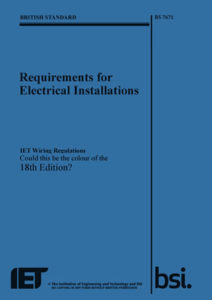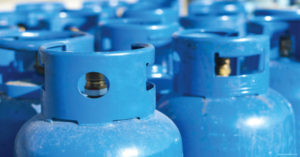 A fundamental principle of BS 7671, is that every electrical installation is provided with appropriate documentation (Regulation 132.13) but since the Minor Works Electrical Installation Certificate (MWEIC) was introduced in 1993, there has been some confusion over its use.
A fundamental principle of BS 7671, is that every electrical installation is provided with appropriate documentation (Regulation 132.13) but since the Minor Works Electrical Installation Certificate (MWEIC) was introduced in 1993, there has been some confusion over its use.
It has been general industry practice to only use an MWEIC’s for small additions and alterations where a new circuit is not installed.
This is not always the case or requirement. Whenever a significant change in an existing circuit’s arrangement is afforded, an MWEIC should be used.
We often hear “it’s a like for like, so I don’t have to use an MWEIC”. In some cases, this is acceptable, where non-current using equipment, such as socket outlets, switch plates etc. are changed for new items following damage or cosmetic replacement of the same type.
Best Practice
However, it is best practice to use an MWEIC for replacing any equipment, as a record of works carried out to an installation, and to confirm important safety requirements are in place.
A problem with the “like for like” approach is that contractors feel that larger current using equipment, such as showers, boilers and other larger equipment can also be exchanged on a like for like basis, following damage or cosmetic upgrade, without issuing at least an MWEIC.
This is not as straightforward as it seems. It is unlikely that a 7 kW instantaneous electric shower can be replaced with a similar item, as these items (7 kW showers) are now few and far between. This means the existing circuit may not meet the requirements of a larger output shower, of say 8.5 kW as a minimum, which is likely to be the replacement. In some cases, manufacturers installation instructions, of any new equipment, may also require specific circuit parameters are met, such as the inclusion of an RCD.
Where current using equipment, is not identical to the equipment it is replacing, an MWEIC at least should always be used. It should be noted that a new boiler is not considered to be identical to the model it replaces unless it is the same model, which is unlikely.
Misconception and proposed changes
Another industry perception was that the MWEIC was simplistic and not a real certificate, as the information required for it was very much reduced when compared to an Electrical Installation Certificate (EIC). This is not the case and for this reason, an updated MWEIC has been proposed for BS 7671:2018 the 18th Edition of The IET Wiring Regulations.
The draft for public comment (DPC) period has just closed and in the DPC, was a proposed new MWEIC.
BS 7671:2018 the 18th Edition of The IET Wiring Regulations, is due to publish in July 2018 and be a live document on January 1st, 2019.
The proposed new MWEIC has 5 parts, as opposed to 4 parts in the existing version. The extra part and how it differs from the older circuit can be seen in the table below:
| Existing MWEIC Parts and Descriptions | Proposed New MWEIC Parts and Descriptions |
| PART 1: Description of minor works | PART 1: Description of minor works |
| PART 2: Installation details | PART 2: Presence and adequacy of installation earthing and bonding arrangements |
| PART 3: Essential tests | PART 3: Circuit details |
| PART 4: Declaration | PART 4: Test results for the circuit altered or extended (where relevant and practicable) |
| PART 5: Declaration |
Part 1 changes now include the client details, which is a fundamental requirement for any installation works.
Another key change here is a requirement to comment on the existing installation, specifically any defects which have been observed. This has always been a requirement of Reg 633.2 but is often overlooked.
Part 2 changes will now ask for the Zs at the distribution board of the supplying circuit.
More importantly, Part 2 will now require that the presence and adequacy of the Earthing conductor and Main protective bonding conductors are identified and recorded.
Part 3 is now the circuit details, DB reference No, location and type, circuit No and description, circuit conductor sizes and overcurrent protective device (type and rating). These required details are more in keeping with the information usually asked for on the Schedule of test results.
Part 4 is where the new MWEIC really takes a step up. It will now be a requirement that protective conductor continuity is verified using test methods and either R1 + R2 or R2 measured values are recorded. The measurement and recording of the continuity of all ring final circuit conductors will now also be a requirement.
Part 5 is the declaration and there are no significant changes to this part.
So, as we can see the proposed new MWEIC has come of age and is now in a format that reflects its true use. As with all the forms contained in Appendix 6 of BS 7671, the new MWEIC will be a model form, which means that it can be modified for a particular use, providing the minimum information is not detracted from.
It should be noted, however, that the existing and proposed new MWEICs are not to be used for the replacement of either Consumer Units (CUs) or Distribution Boards (DBs). Any installation or replacement of a CU/DB should be accompanied by a full Electrical Installation Certificate (EIC).
Earlier in this article showers and boilers were used as examples of current using equipment, but the term “current using” also applies to much smaller equipment. Smart home control centres and associated devices, still use current and by definition, will require an MWEIC to be produced whenever they are added to an existing circuit or where they are being replaced with newer equipment.
Source: https://www.voltimum.co.uk/articles/minor-works-certificate-time-change



